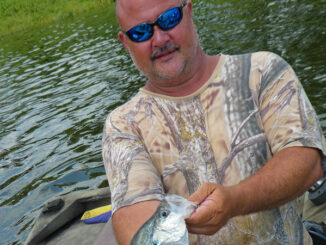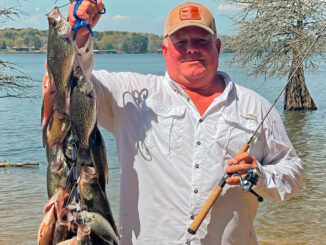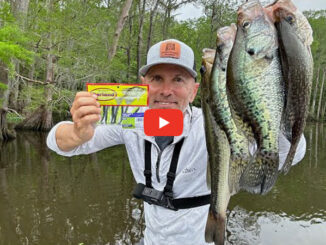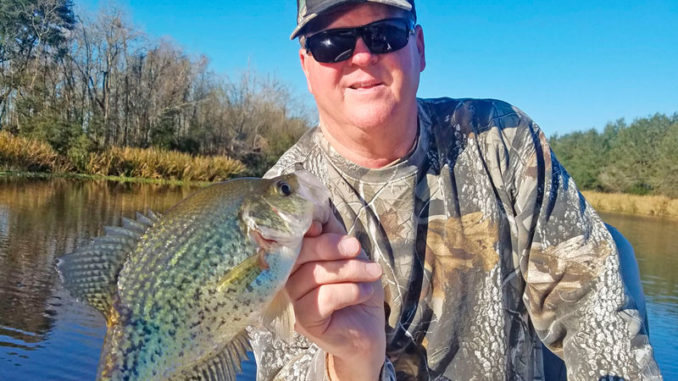
Look for slightly stained water, fish jigs under a cork as fish approach prespawn
Canals and other waterways around Bayou Des Allemands and Lake Boeuf are places you’ll find one of the most-consistent sac-a-lait anglers targeting slabs in January.
Clyde Folse, a guide and owner/general manager of The Crappie Psychic in Raceland, knows sac-a-lait can be caught around Bayou Black, too, but he’ll be on either Des Allemands or Boeuf for the first two or three months of 2021. Both areas are close enough they can be fished in one day, he said.
Sac-a-lait success should be better around each new moon, Flose advised, because fish are less likely to eat at night. Also, he said, just before a cold front and a few days after are some of the most productive periods.
Sac-a-lait transition before the spawn and leave deeper water to get into spawning areas, Folse said. He doesn’t rule out stained or dingy water when targeting the fish he loves to catch.
“I look for darker-colored water, what I call ‘coffee water,’ but not too clear,” he said, adding if the jig he’s using falls out of sight when it gets a foot to 1½ feet level, that’s ideal. Another key is watching the shaft of a white trolling motor, which he has; if he can see 16 inches, he said, “I like that color water; it still has clarity to it. Fish it.”
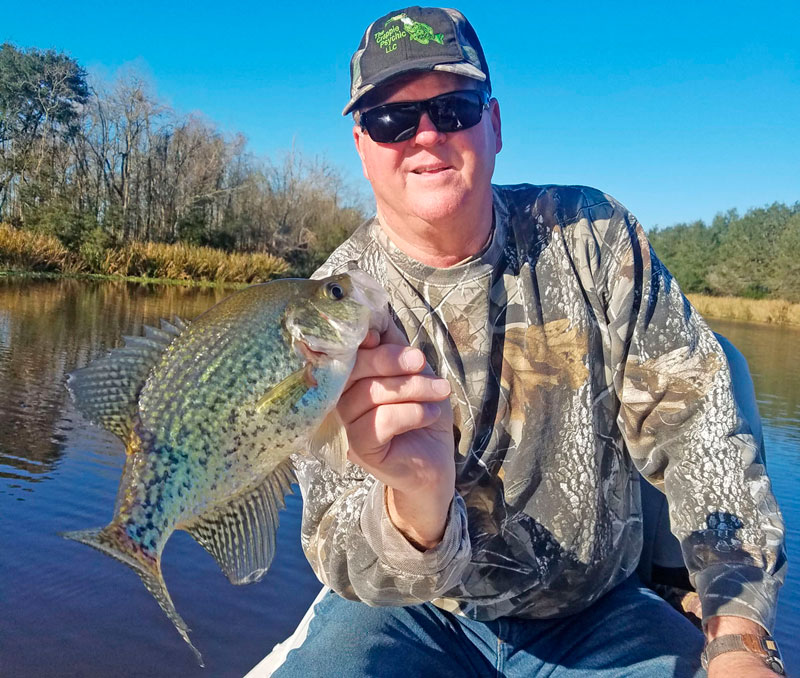
Scouting, putting in time looking for sac-a-lait, is another key unless an angler has the use of marine electronics. “Old school” anglers like Folse put their time in on the water. That way, when the bite isn’t on but he knows the fish are there, his patience is rewarded more often than it isn’t.
He can remember many times when there’s a lull in the action, say, for two hours after 1 o’clock in the afternoon, then the fish turn on after three hours and it’s slab after slab coming into the boat.
Folse ties a 1/16-ounce Crappie Psychic Hamma Head jighead to 8-pound Trilene XL low-vis green mono, then adds his own black/white Crappie Weapon with a chartreuse Crappie Trailer and chartreuse Crappie Ammo.
Folse prefers to fish for sac-a-lait with a cork, not just any old cork, but a Slab Rattler glow cork, especially during the spawn in late January, February and March, which are the peak times for sac-a-lait around Des Allemands and Lake Bouef.
“That rattling cork kind of attracts them,” he said.
And cork color matters, something he stresses during his seminars.
“I teach this all across the country. I’ll ask, ‘How many think what color cork you’re using is important?’ Maybe I’ll get two, three hands showing it matters. It’s chartreuse. No orange or red,” he said.
How does he feel about fishing for sac-a-lait without a cork?
“You can tight-line; I have friends who do it. They know how to cast to shore and bounce down until they come off a ledge,” he said.
When he’s hunting for the slabs before the spawn in the canals, he fishes 3 to 3½ feet deep until he finds the dropoff — the deeper water where sac-a-lait stage before moving up. Later, after they move shallower, he fishes a foot deep, even 8 inches.
Folse finds it’s easier to locate the ledge with a cork. He casts toward shore and works it out. The cork will lay horizontal until the jighead can’t touch bottom, then goes upright.
He can’t wait ‘til it sinks with the tug of a big, fat sac-a-lait.
